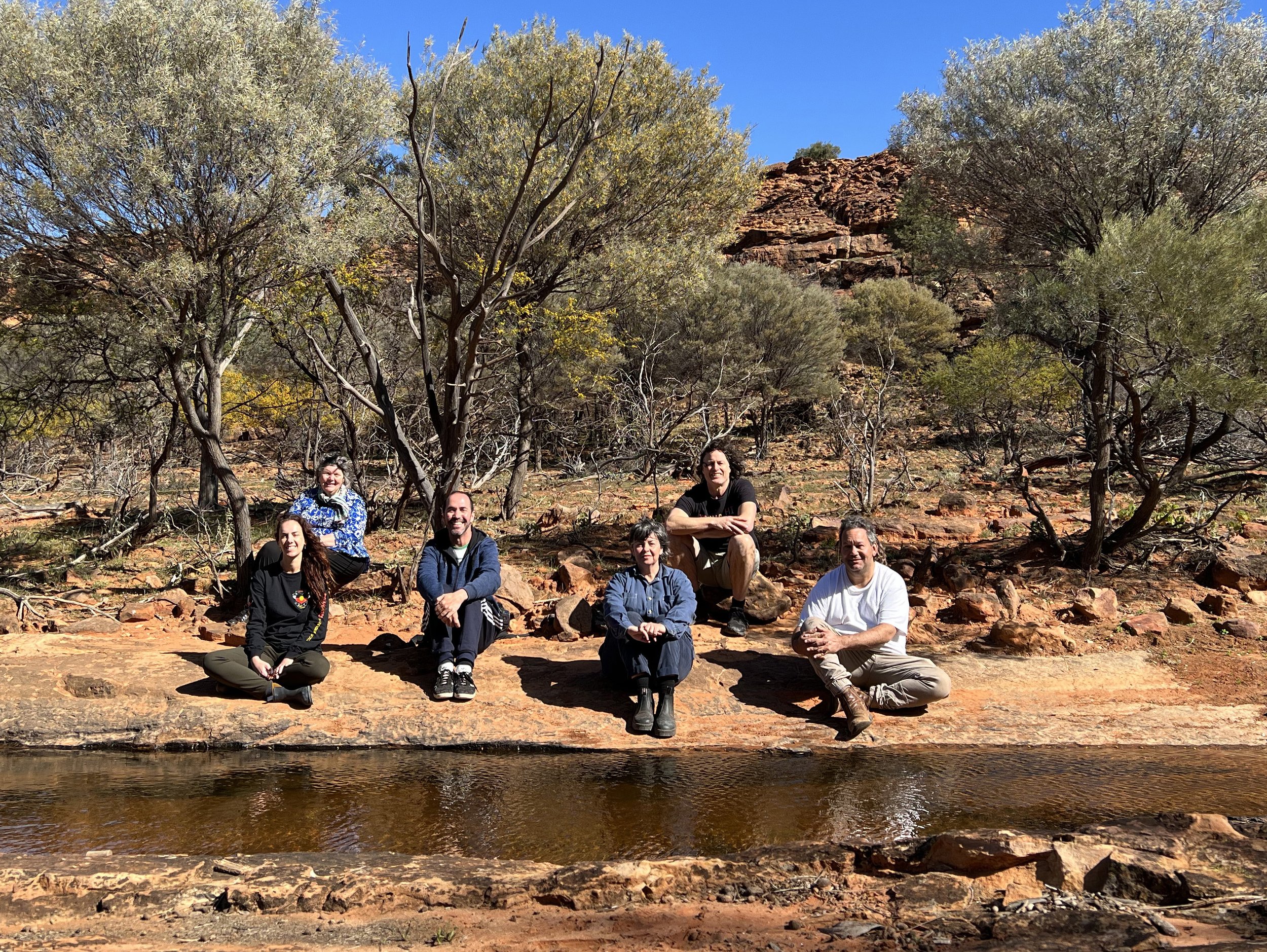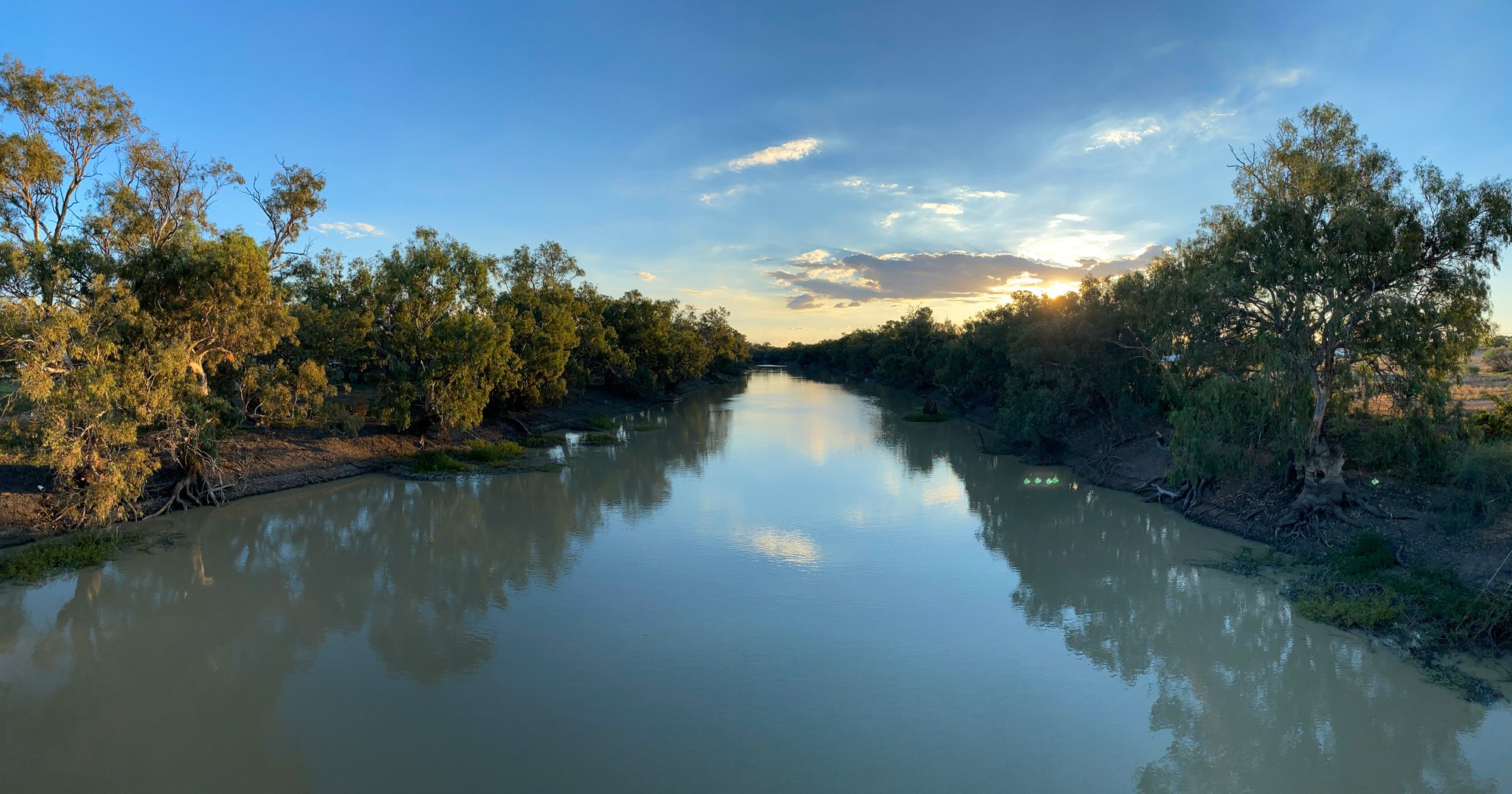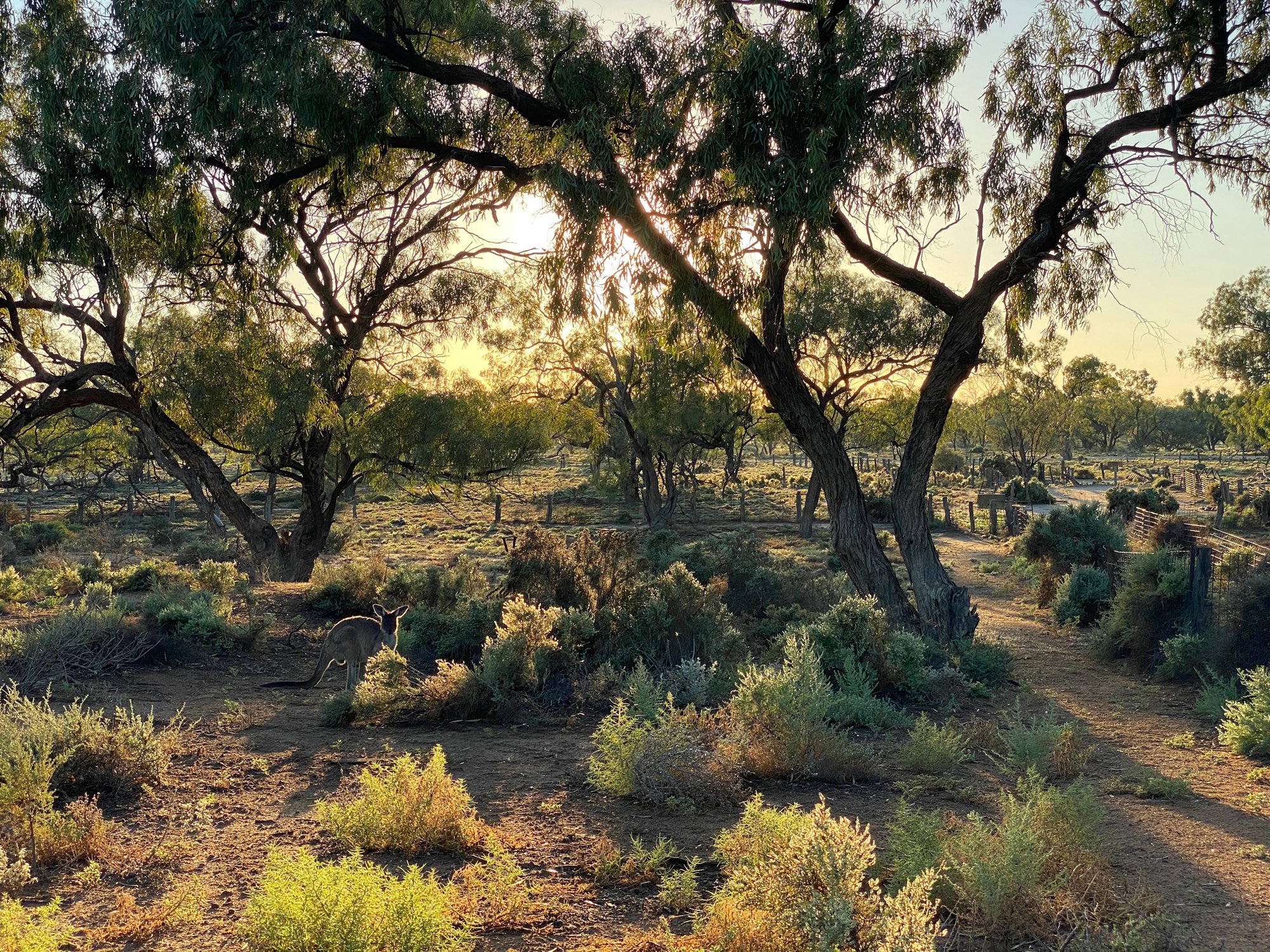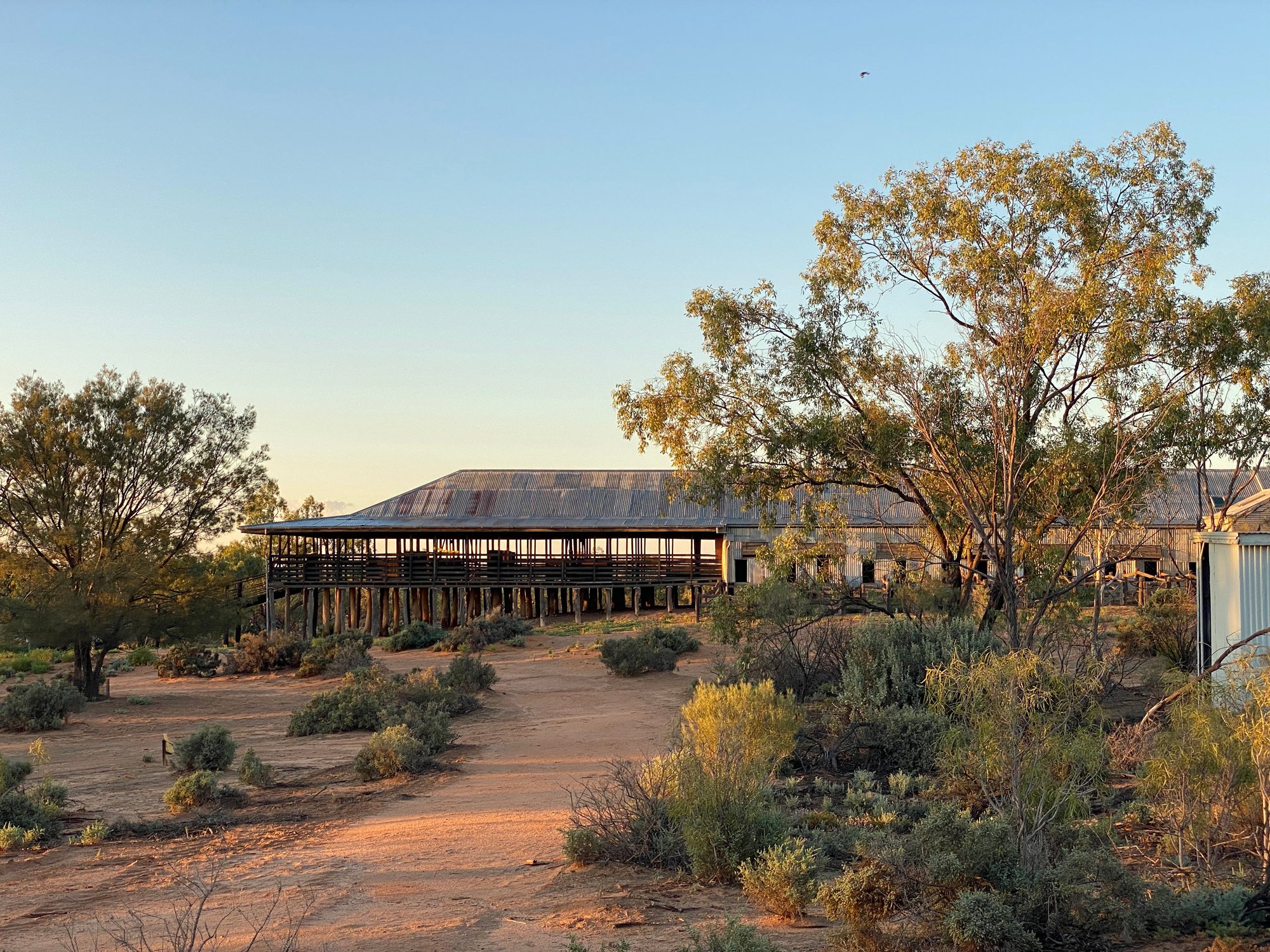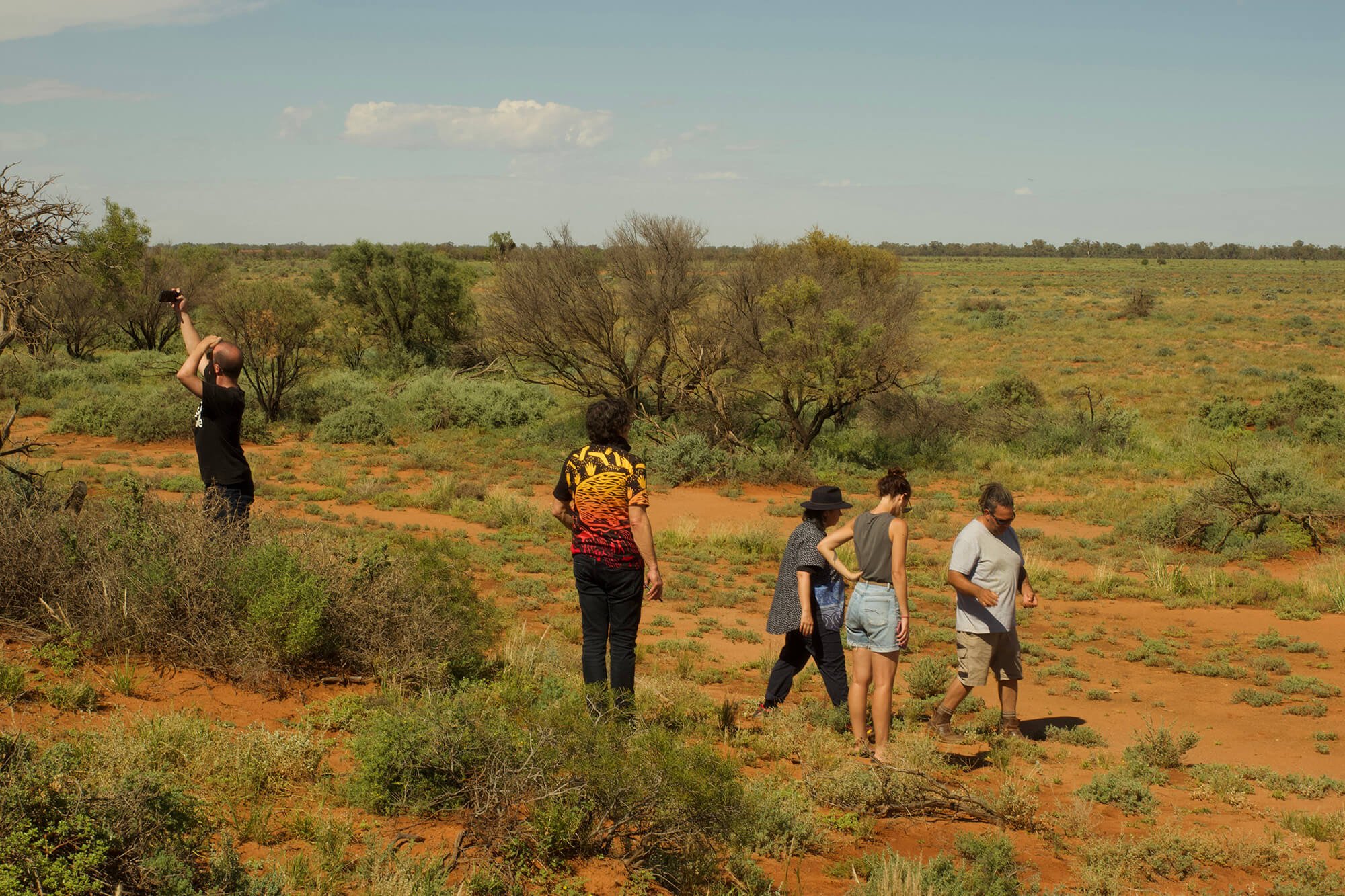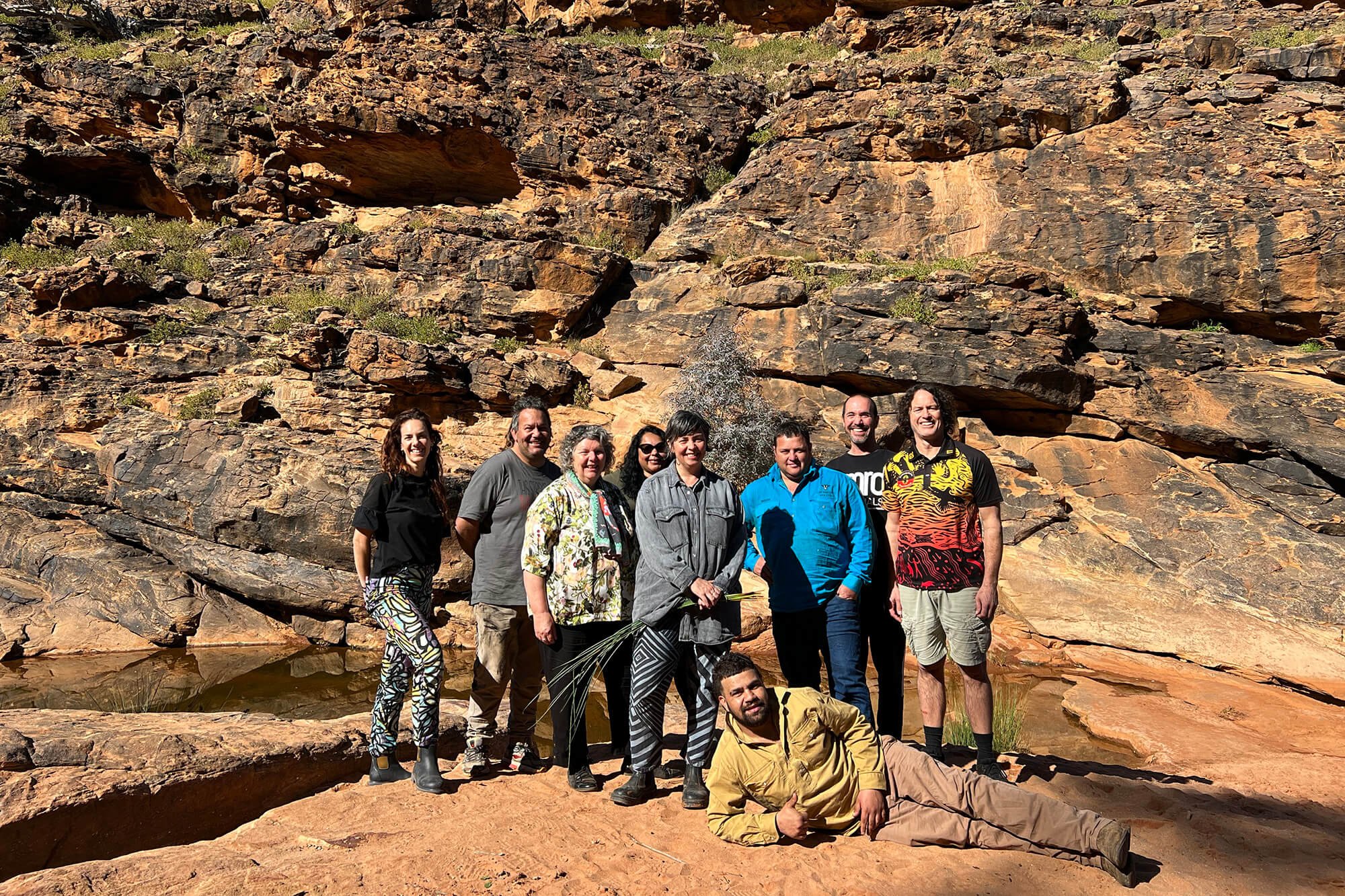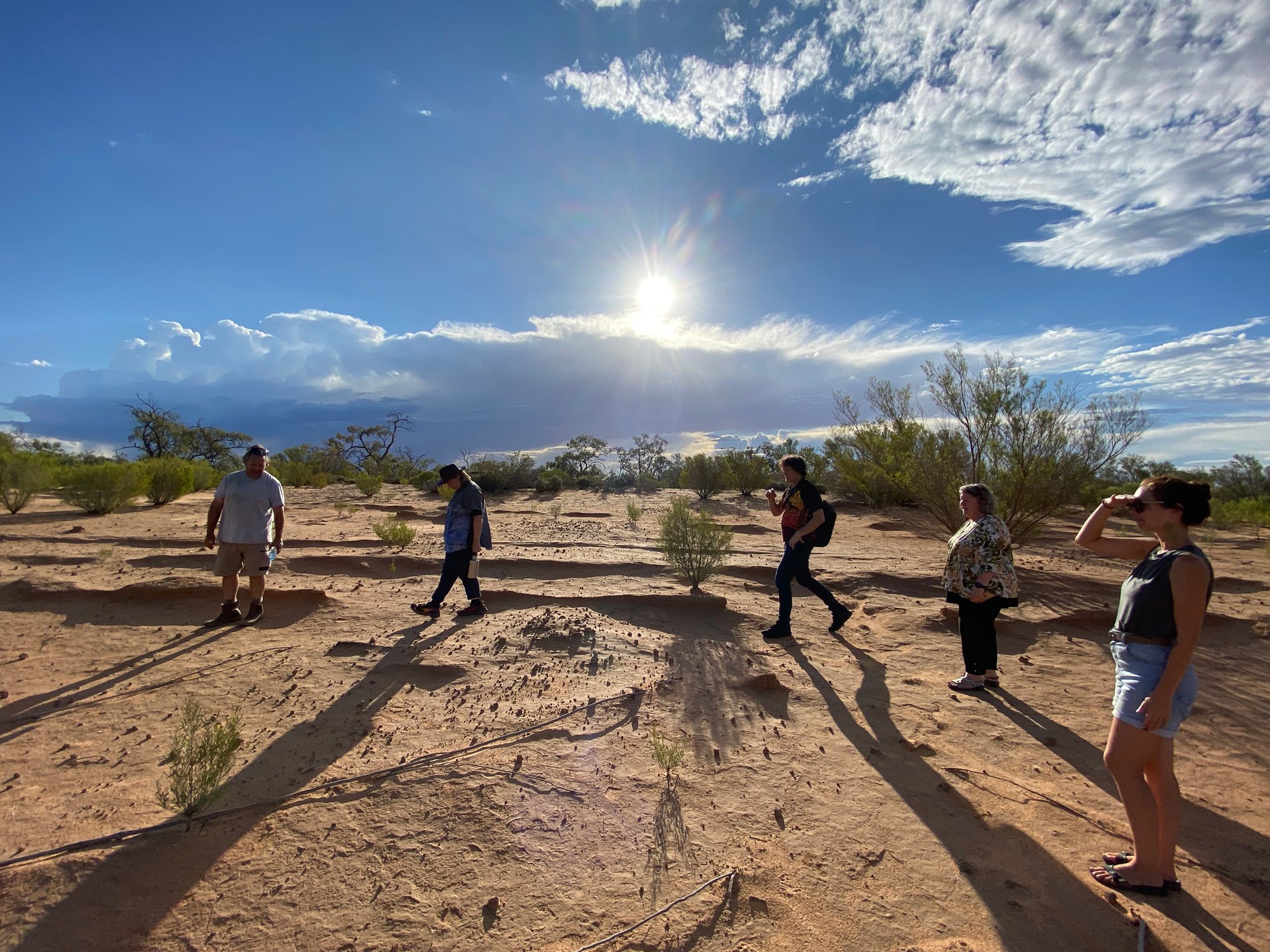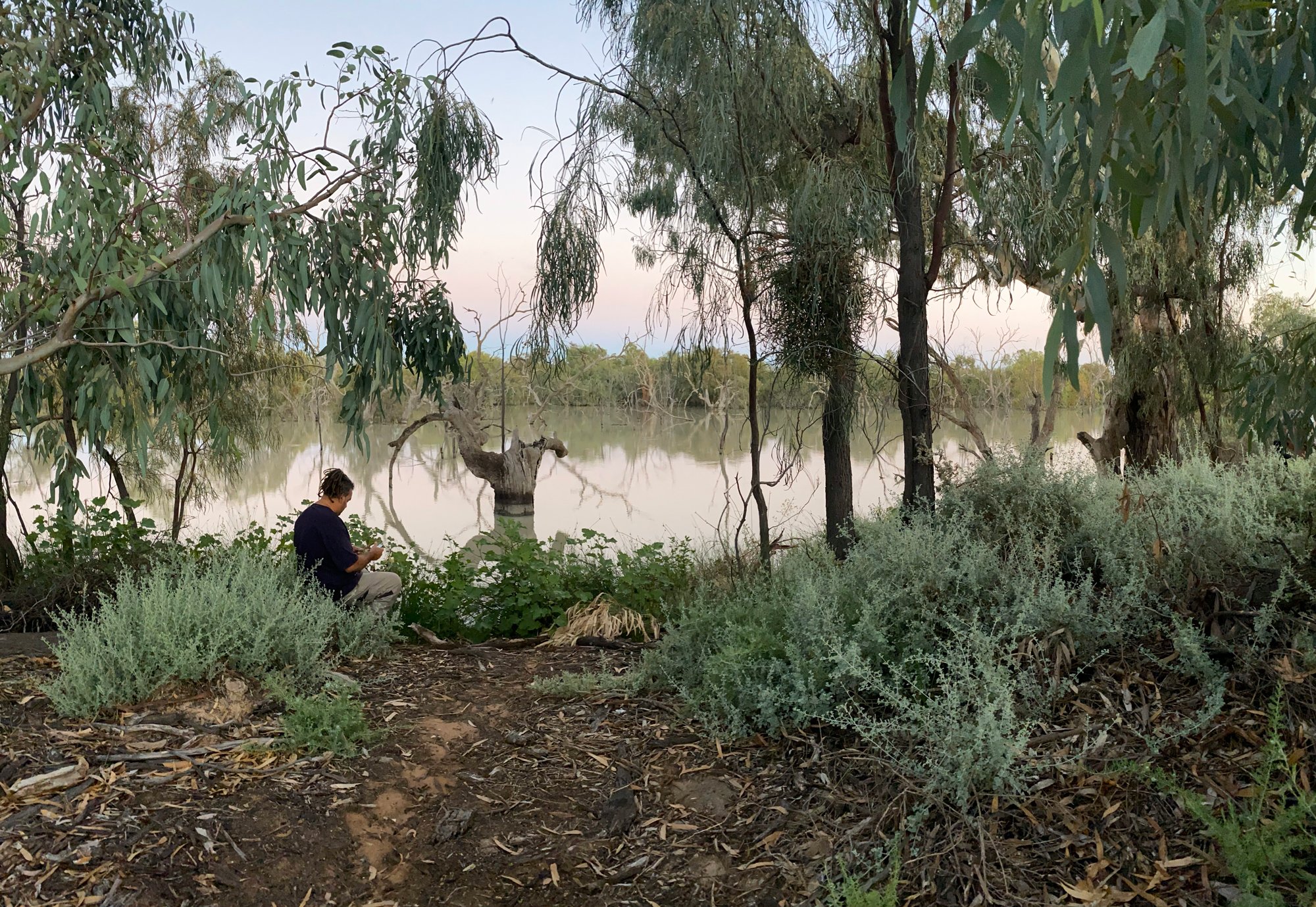Curators’ foreword
The ngaratya (together, us group, all in it together) exhibition began with a conversation in 2020. Georgia Cribb and Penny Teale approached Barkandji artist and curator Nici Cumpston to offer an opportunity to present a solo exhibition at Bunjil Place Gallery. Upon seeing the impressive scale of the Gallery Nici instead suggested the idea of working alongside her sister Zena Cumpston to co-curate and to realise a long-held ambition to collectively create a group exhibition with fellow Barkandji/Barkindji artists.
Prior to this project the artists were known to each other, having professional relationships forged through past projects, and with several also related through family connection. Through conversations over many years the group had expressed a desire to work on ‘something’ together, as Barkandji/Barkindji artists, and particularly to spend time together on Ancestral homelands.
The starting point for the development of the exhibition was simply the foregrounding of including Country as an active participant. As Aboriginal people living in a colonised circumstance, it is not often that we can dictate the terms upon which we wish to create and collaborate. Being supported to work in a culturally grounded way without considering the sometimes stifling parameters of ‘project outcomes’ is a rarity. With no specific premise for the show set, the group, and importantly, all our wonderful collaborators and supporters at Bunjil Place Gallery and NETS Victoria, placed great trust in our process. We were supported to set off on several journeys to come together with and on our Ancestral homelands, visiting and spending time at multiple significant cultural landscapes within our Barkandji/Barkindji Country in far west New South Wales. Planning and executing these trips was often challenging with Adrianne, Raymond and Nici residing on Kaurna Country in Adelaide, Zena on Wurundjeri Country in Melbourne, Kent on Yalukit Willam Country in Melbourne, and David on Wilyakali Country in Broken Hill. Juggling to navigate busy schedules, work and family commitments, over a twelve-month period we managed to come together for three trips collectively, and then separately each of the artists did at least one additional trip to Country as part of our ngaratya project. In between these trips the artists regularly met online together and with our project partners, also participating in several public talks to share our progress and journey.
This map utilises the language, social and nation groups as represented in the AIATSIS-produced Indigenous map of Australia. Click the map to enlarge.
The first trip was to Kinchega National Park, approximately 130 kilometres southeast of Broken Hill, located near the township of Menindee. The Baaka/Barka, the lifeblood of our people (also known as the Darling River) as well as the spectacular Menindee Lakes embody this area. There are incredible sites all across this part of our Country that show evidence of ongoing occupation of our Barkandji/Barkindji people. We were able to connect with family and community, coming together to share and learn more about our culture, histories, and connections.
At Kinchega National Park we stayed at the shearer’s quarters. During the day we travelled to the many abundant surrounding waterways, walking together on Country. David is a generous cultural leader; he openly shared his knowledge and supported us to learn and engage with our Country in ways that prior to this journey were unimaginable to us. On every journey he took time to stop and show us traditional plants, either harvested as food sources, for medicinal purposes or to make cultural objects. David also spoke on our behalf with the Elders group to seek permission for us to access cultural materials held in a keeping place at Kinchega. As a group we shared the deeply moving experience of carefully handling the stone tools and grinding stones utilised by our Ancestors to survive and thrive on our vast Country. Most often as Aboriginal people this type of cherished connection is rare, and usually involves having to wear plastic gloves and having to seek permission from institutions through often lengthy processes. Connection is heavily mediated by museum employees who, in many various ways, decide what you can see, watch on as you look, too often within allocated (and too short) scheduled timeframes. To be able to connect in a relaxed environment, to touch cultural items with our hands, made by the hands of our Ancestors, was a deeply emotive and cherished group experience.
On this first trip we also visited Menindee School and spent time in the Art Department sharing our plans and ideas. As Nici, Zena, Raymond and Adrianne are blood relatives, several of our cousins also came to visit us and we spent time building our family tree, almost quadrupling what we had begun with and comparing and sharing knowledge to expand this repository of belonging.
The second trip was to Mutawintji National Park, an immensely important cultural landscape situated approximately 130 kilometres northeast of Broken Hill. Here we went on a guided walk with local custodian Mark Sutton, who introduced us to ancient rock art sites abundant in this area. We also spent time with fellow Barkindji/Barkandji mob from Wilcannia, assisting in a revegetation project with the local Broken Hill Landcare association. There is permanent water available here and this part of our Country is where ceremonies have been held by our Ancestors and neighbouring groups for millennia. We spent days transfixed with the beauty of Mutawintji, feeling the spirit of our Ancestors as we walked through the many spectacular gorges, sitting around the fire talking long into the night.
Our final group trip was to Broken Hill, with a day trip to Wilcannia to visit the school where we shared time with teachers and students who were screen printing their designs onto fabrics getting ready for the local market. The Barka was in flood, and we were in awe to see the water powerfully flowing after years of devastatingly low levels. While in Broken Hill on this last group trip we worked collectively to support the development of each other’s work and the wider narratives of ngaratya. We also came together to make string from sedge which we then utilised to create a net which is featured in the heart of the exhibition in David Doyle’s installation of kamuru (river red gum).
Whilst we began this journey with no known destination, we trusted that Country, our Mother, would show us the way. Being together on our Barkandji/Barkindji Country gave each of us precious time to strengthen and build our knowledge, our cultural connection and especially to deepen our relationships with each other and our Barkandji/Barkindji community. Being on and with Country gave us all we needed to develop the concepts and ideas for our work in the exhibition. Our Country lead the storytelling showing us each where to go. She held and nurtured us, drew us closer together and guided when we were unsure. Each of the artists have made work that conveys their love and passion for our people, for our Ancestors, for our culture, for our Country.
We have been blown away by the support and trust of our non-Aboriginal collaborators and we are so thankful to all at Bunjil Place Gallery and NETS Victoria. We were empowered to work in a way that followed no linear path but made sense to us culturally and honoured our ways of seeing, being and doing. By making room for us to work in this culturally grounded way, that foregrounded journeys and connecting more than any ‘destinations’, we were able to create artworks that powerfully connect to one another and telegraph important narratives to a wide audience.
This show was made with love and care because we made it to honour our people, our culture and our Country. Through the exhibition and particularly its title, we warmly welcome you to come together with us, to connect with, to nurture and to advocate for Country.
Nici Cumpston and Zena Cumpston, sisters and co-curators, 2023
